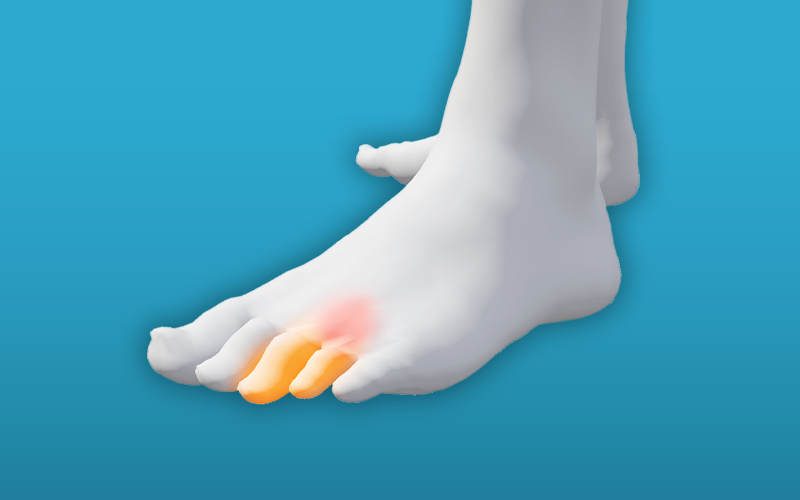
Neuroma
What is it?
A neuroma is a swelling or thickening of a nerve which results in compression and irritation against other tissues between the metatarsal heads on the ball of the foot. For information from the NHS choices click here
Morton’s neuroma usually affects your foot between your 3rd and 4th toes.

How to manage it
Modifying activity – Rest the foot for a short period of time
Footwear
Keep pressure off the forefoot by wearing comfortable shoes which are wide and have a strapping device such as a lace or Velcro strap, deep toe box/forefoot part to allow enough room for the toes.
See the footwear section for further advice.
Simple painkillers
Painkillers like paracetamol will ease the pain, but need to be taken regularly in order to control the pain. Always follow the instructions on the packet.
Anti-inflammatories like ibuprofen can help with swelling, and therefore help you move more freely. Topical (applied directly on the affected body area) anti-inflammatories are recommended initially. Follow the instructions on the packet and discuss using them safely with a pharmacist, especially if you have any underlying health conditions
However, you should not take ibuprofen for 48 hours after an initial injury as it may slow down healing.
Up to date guidelines can be found on the NHS website:
Other medicines can help to reduce inflammation, swelling and pain. You should discuss this with your GP if the simple pain relief advice does not help or if you are needing to take ibuprofen for more than 10 days.
Insoles or Orthotics
There are a number of different insoles available, online or in shops, to provide support and comfort. Insoles are inserted into the shoe. An insole with a metatarsal dome shaped pad can help to reduce the pressure under the ball of your foot.
Here is an example of an insole with a metatarsal dome built in to the insole.
These insoles are widely available online and in a number of shops, please speak with a health care professional if you need any advice.

Exercises
Regular stretching exercises for your calves will help to reduce the pressure on the front of your foot.
Stand in a walking position with the leg to be stretched straight behind you and the other leg bent in front of you. Take support from a wall or chair.
Lean your body forwards and down until you feel the stretching in the calf of the straight leg.
Hold approx. 30 secs. relax. Stretch the other leg. Repeat 3 times.

Stand in a walking position with the leg to be stretched behind you. Hold on to a support.
Bend the leg to be stretched and let the weight of your body stretch your calf without lifting the heel off the floor.
Hold approx. 30 secs. – relax. Repeat 3 times.

It is important to do both these exercises.
Usually a combination of improving your muscle flexibility and wearing orthotics in your shoes considerably reduces your pain.
If symptoms are not manageable please discuss your GP for further advice.
